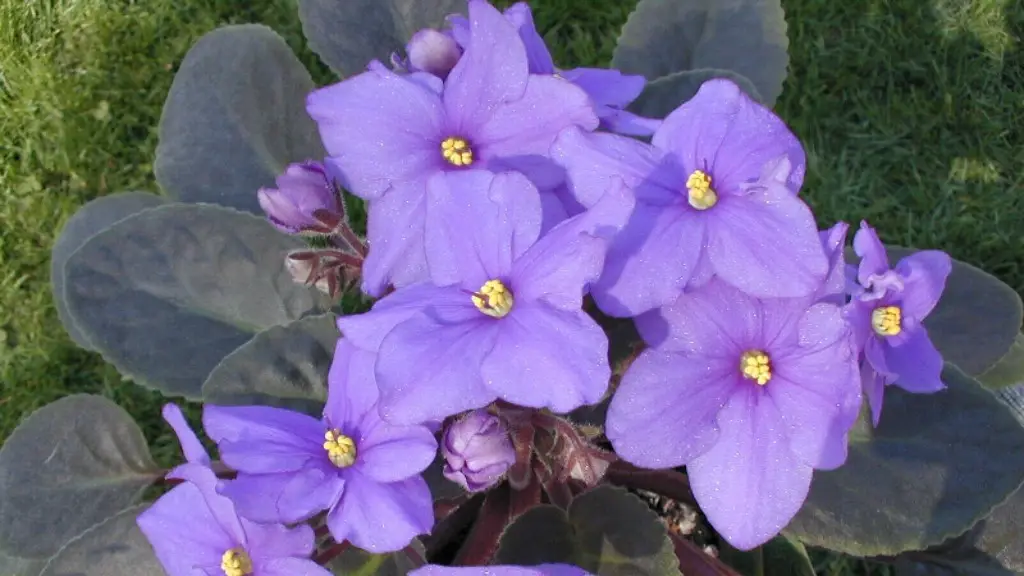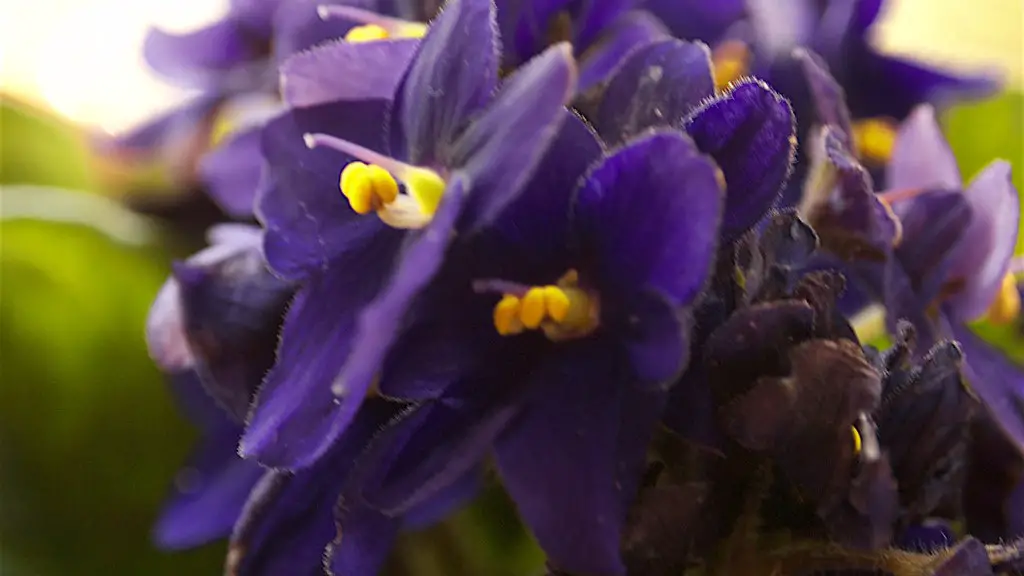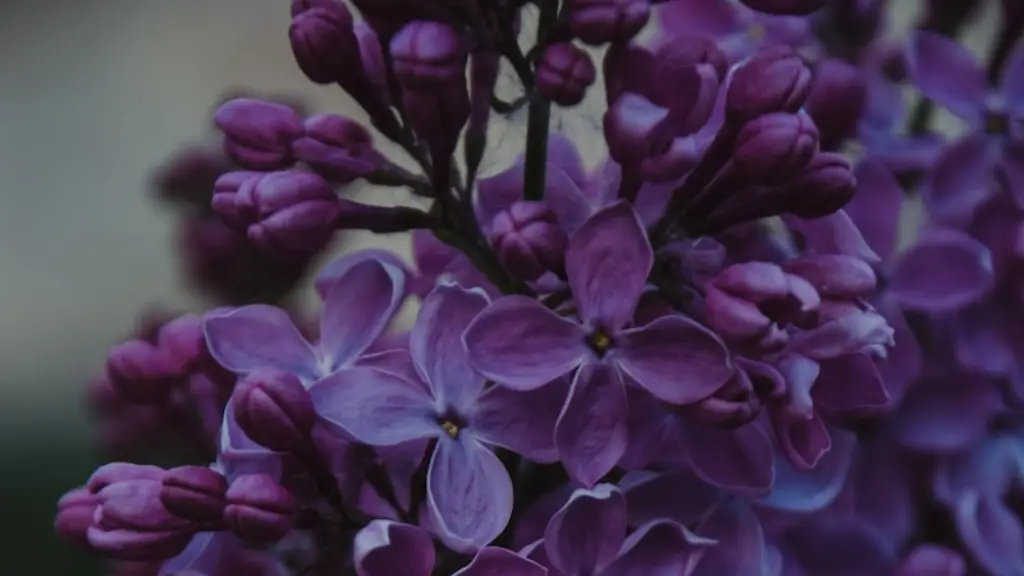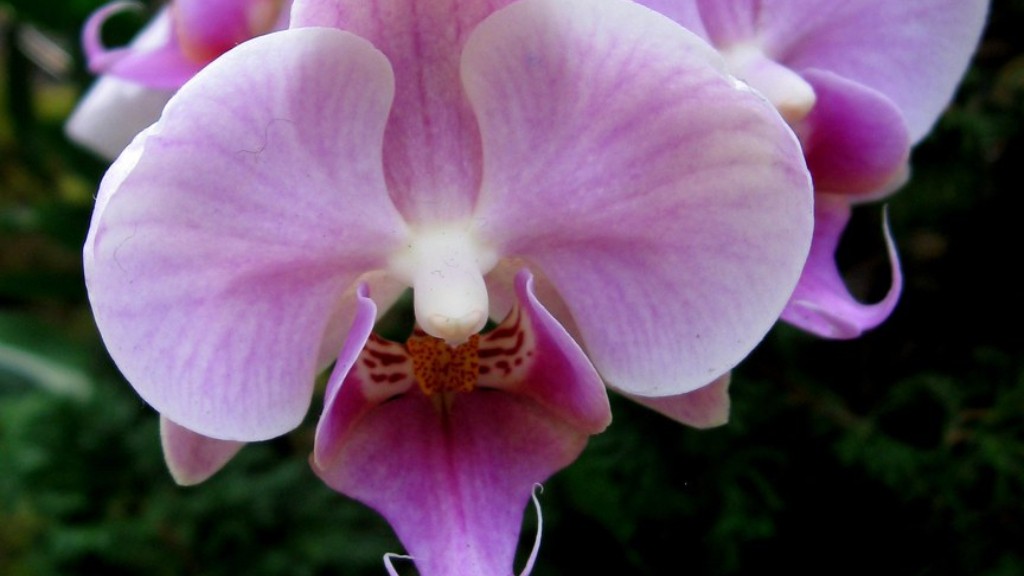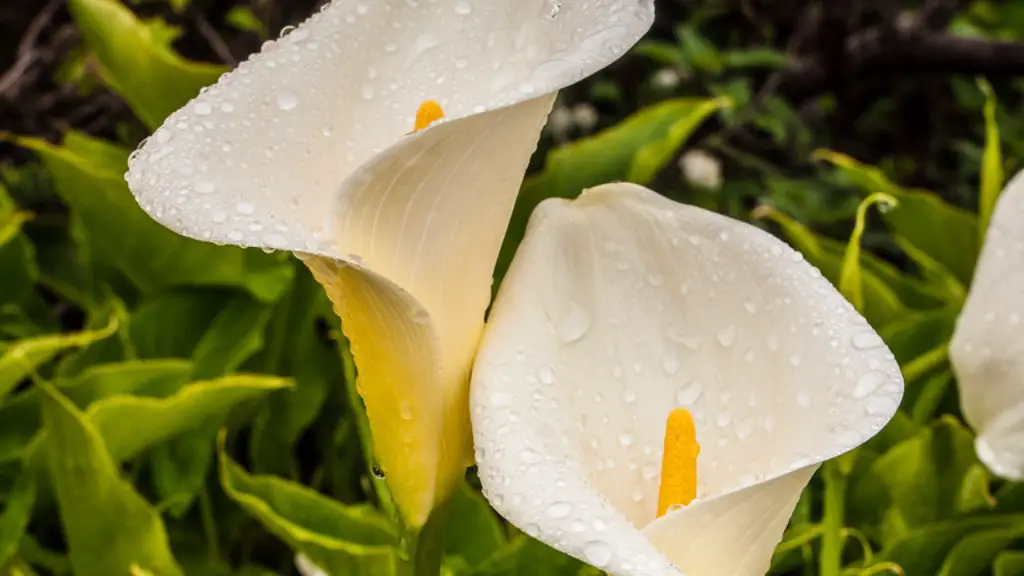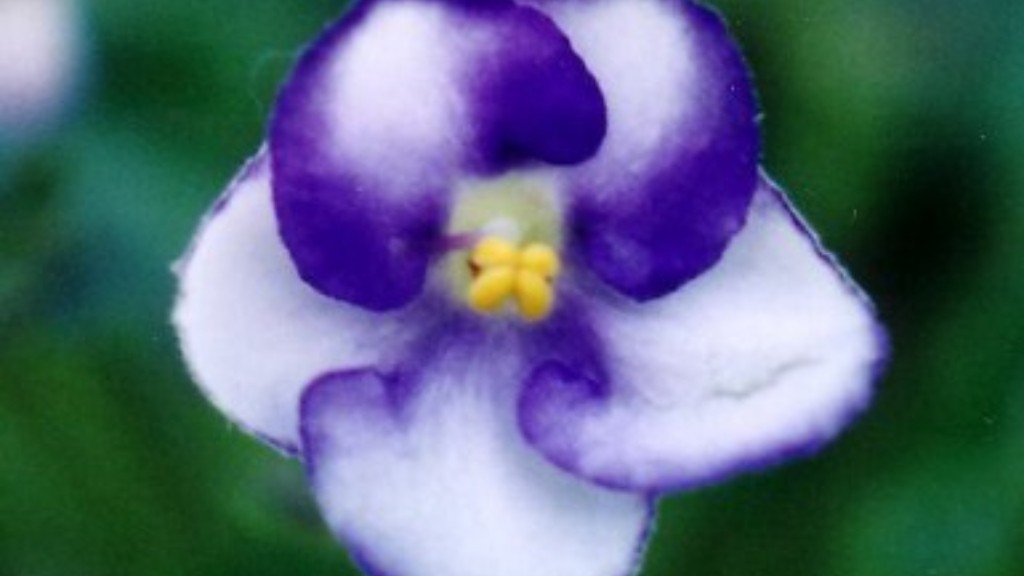African violets are a type of houseplant that originated in Africa. They are known for their beautiful flowers and their ability to thrive in low-light conditions. When it comes to watering African violets, there are a few things to keep in mind. First, you should use lukewarm water. African violets are sensitive to temperature changes, so using water that is too cold or too hot can damage the plant. Second, you should use a watering can with a small spout or a watering bottle with a spray nozzle. This will help to prevent water damage to the leaves. Third, you should water the soil, not the leaves. African violets are prone to leaf spot, which is a type of fungal infection. Watering the leaves can spread this infection, so it is best to water the soil around the plant. Finally, you should let the soil dry out between watering. African violets do not like to sit in wet soil, so be sure to allow the plant to dry out before watering again.
There are a few different types of water that can be used for African violets, but the best type of water to use is actually rainwater. This is because rainwater is naturally soft and doesn’t contain any chemicals or minerals that could potentially harm the plants. You can also use distilled water, but make sure to add a little bit of regular tap water to it so that the plants can get the minerals they need.
Do African Violets need distilled water?
African violets are one of the most popular houseplants around, and for good reason: they’re easy to care for and they bloom frequently. However, a few tips will significantly increase your success with this plant and help it to rebloom. African violets need to be watered around once a week, and they prefer distilled water or water that has sat out on the counter for 24 hours and is lukewarm. Watering from the bottom works well. Be sure to empty the saucer after watering, as African violets are susceptible to root rot. These plants also prefer high humidity, so misting them regularly or setting them on a pebble tray will help keep their leaves from browning. African violets need bright, indirect light to bloom their best. If you live in a particularly dry climate, you may need to increase the humidity around your African violet even more.
The African Violet is a beautiful and popular plant that is easy to care for. The roots of the plant need to be kept moist, but not soggy. Overwatering can lead to problems with the plant, so it is important to water from the bottom so that the roots can soak up the water. African Violets like warmer water, around 70 degrees.
How often should a African violet be watered
If you only water your African violets once a week, and allow the plant to completely dry between waterings, you can set up a wicking system to make sure they are never over watered.
African violets are very sensitive to overwatering. You should always allow the soil to dry between waterings. Too much water creates soggy soil and can cause a wilted or dying plant. A plant sitting in soggy soil will develop root rot, which can quickly lead to crown rot.
What is the best way to water African violet?
Watering your plant is very important to keeping it healthy and encouraging blooming. Keep the soil moist to dry, and allow the soil around the roots to dry out before watering again. This will help encourage blooming. When watering, water from the bottom by placing the plastic grower’s pot in water and allowing the plant to absorb the water. Do not leave the plant in the water for more than 30 minutes.
African violets are beautiful plants that are typically grown indoors in North America. They thrive in bright, indirect light and produce lovely blooms. When choosing a location for your African violet, be sure to pick a spot that is away from any drafty windows. A plant stand three feet away from a west- or south-facing window is an ideal location.
Can I water African violets with tap water?
If you’re not sure about the quality of your tap water, it’s best to err on the side of caution and use filtered or distilled water for your African violets. Chlorine, chloramines, and dissolved solids can all have negative effects on these delicate plants, so it’s best to avoid them if possible.
African violets are susceptible to crown rot, so it is important not to saturate the crown of the plant with water. Water on the foliage may cause permanent leaf spotting, so mist the foliage instead. Use water that is room temperature.
Can you spray water on African violets
To clean African Violet leaves, fill a spray bottle with room temperature or tepid water and spray the leaves. Using your fingers, rub the top and bottom part of the leaves. You can also use the spray bottle method to clean the leaves with liquid soap.
If you’re noticing that your African violet isn’t looking as healthy as it used to, one possible reason is that it’s not getting the right kind of water. Make sure that the water you’re giving it is either tepid or at room temperature – if it’s too cold or too hot, your plant will suffer. Also, it’s best to let the water sit for 24-48 hours before giving it to your plant, but if you can’t do that, then at least let it stand for an hour. With a little bit of care, your African violet will be back to its old self in no time!
What do Overwatered African violets look like?
If you’re unsure whether your African violet is overwatered, there are a few things you can look for. Droopy, soft, and mushy leaves are telltale symptoms your plant is suffering from too much water. These additional signs can help confirm overwatering is the source of your plant’s struggles:
-The soil is soggy or waterlogged
-There is standing water in the pot
-The leaves are yellow or have brown spots
-The plant is wilting
If you see any of these signs, it’s important to take action to save your plant. Allow the soil to dry out completely, and then check the moisture level before watering again.
If your African violet leaves are curling downward or drooping, this is a sign that there is too much light. Too much light can burn the leaves, causing them to turn yellow or brown. The solution to this problem is to move your African violet out of intense sunlight.
How do I know when my African violets need water
It is important to water your African Violet when the soil mix feels bone dry. You can check the moisture level of the soil by lightly pushing your finger down into the mix. If the mix feels moist, wait a few days before watering.
In order to bloom optimally, impatiens need bright but indirect sunlight. Too little sunlight will cause the plant to stretch for the light and produce few or no flowers, whereas too much sun can burn the leaves. An east-facing window is ideal, especially with a sheer curtain to block the sun’s harshest rays. Additionally, impatiens need eight hours of darkness every night in order to properly bloom.
Do violets like coffee water?
Coffee grounds are a great source of nutrients for African violets, and they can help to condition the soil and improve drainage. To make a coffee ground fertilizer, simply mix together dried coffee grounds and dried egg shells. Work the mixture into the top of the soil, and replenish every couple of months.
Coffee grounds are slightly acidic and contain nitrogen, which helps plants grow healthy foliage. Occasionally sprinkling used coffee grounds on top of your African violet potting soil can be good for the plant.
Final Words
The best water for African violets is soft water that has been treated with a water softener.
The best water for African violets is rainwater or distilled water.
